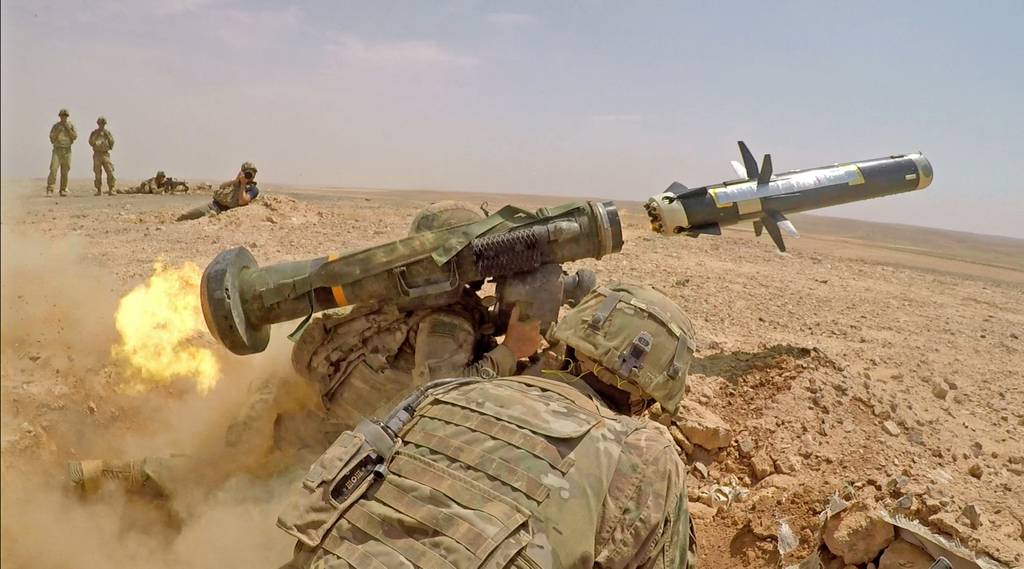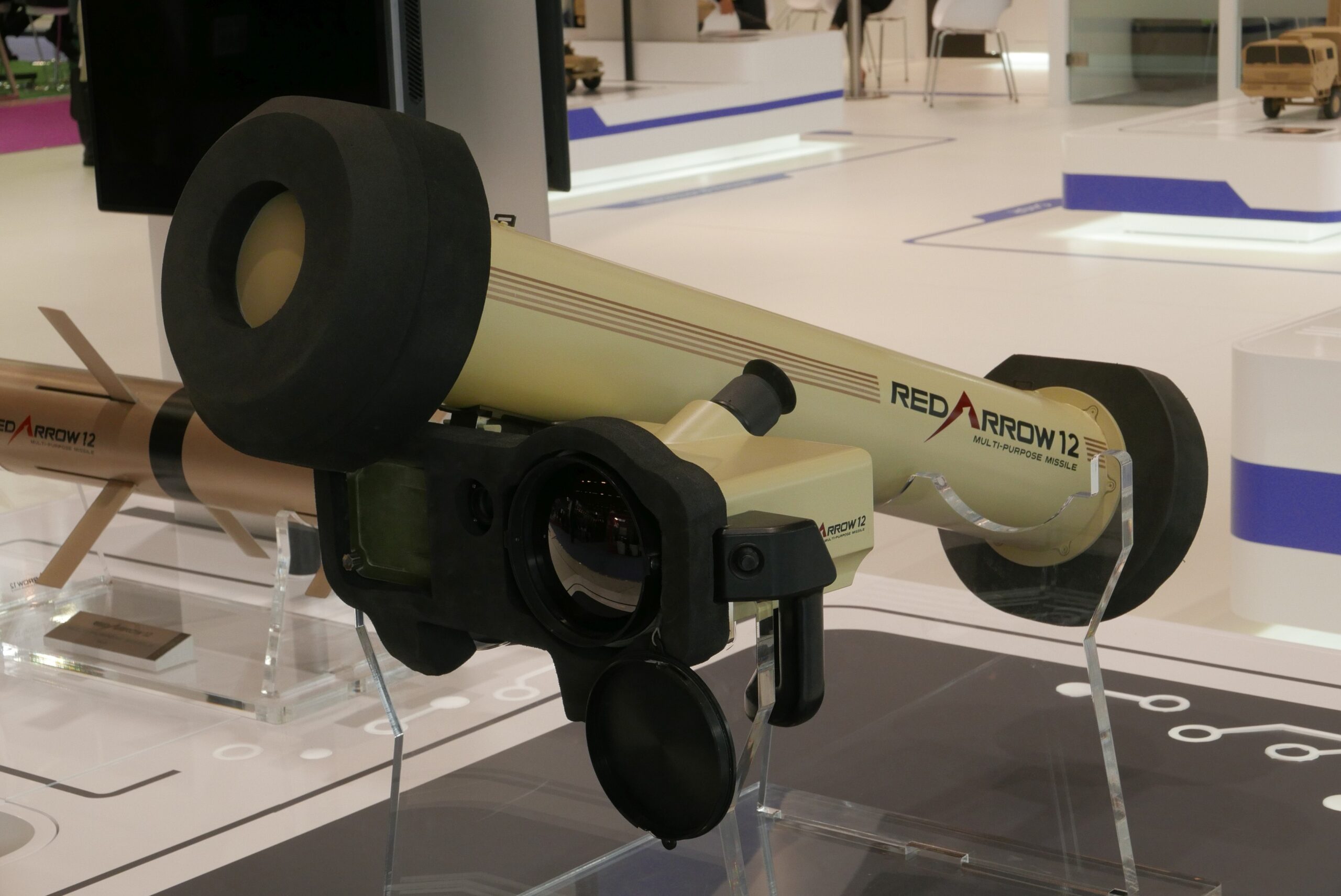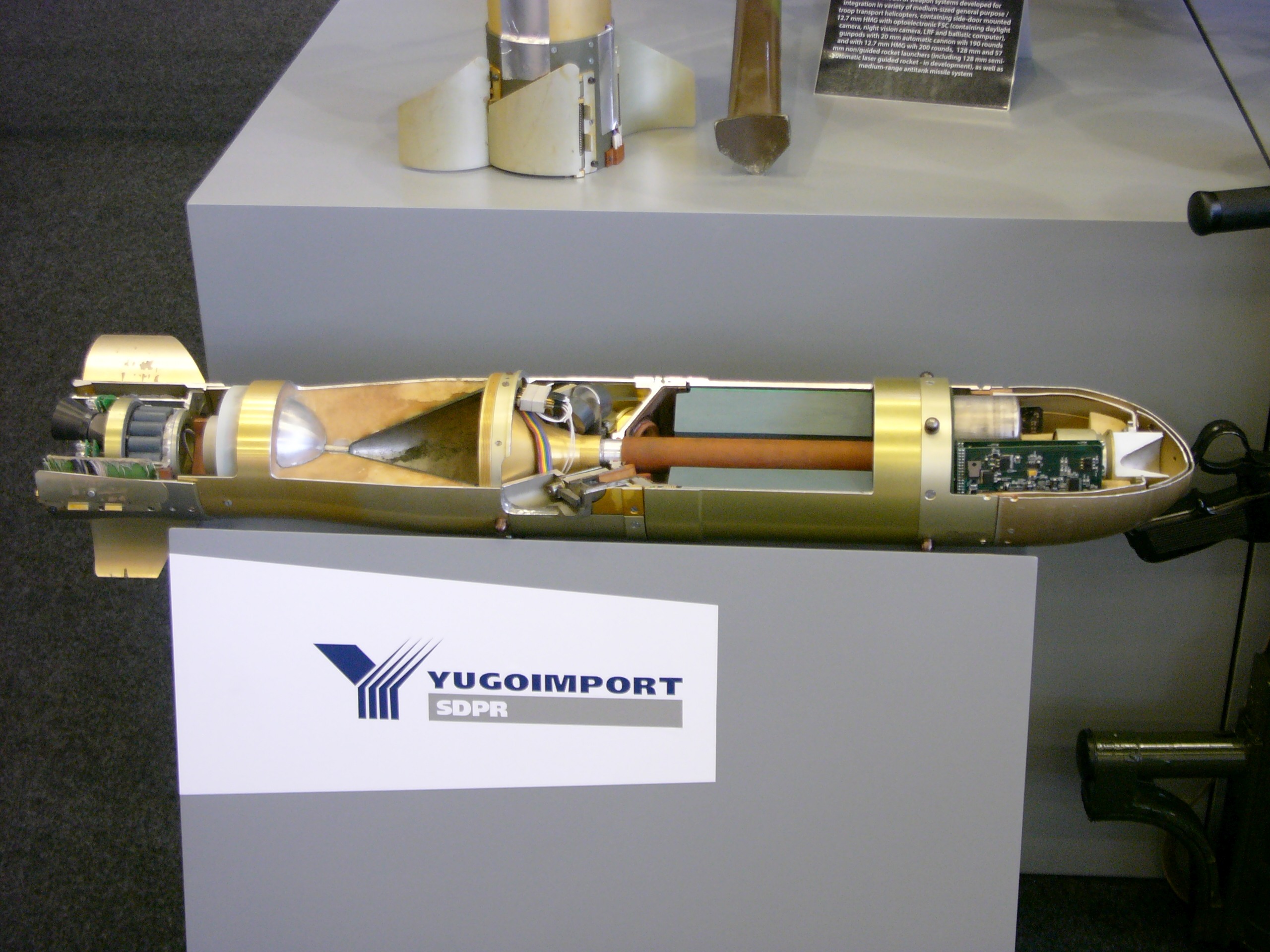In the course of 2022, an unofficial new female saint joined the Ukrainian pantheon. Her halo was not the traditional gold colour used in Orthodox iconography, but used the colours of the Ukrainian flag. Her hands were not raised in gesture of blessing, but cradled the recognisable form of a Raytheon/Lockheed Martin FGM-148 Javelin anti-tank missile.

Credit: Saint Javelin
While the religious authorities did not approve of this image when it began appearing on websites or as ‘street art’, its arrival and the fact that it was dubbed ‘Saint Javelin’ reflected the vital role that the US missile was playing on the battlefield as Ukraine fought to contain then drive back the Russian forces that had invaded it.
History has shown that ‘kill’ claims are often inaccurate, and TV pundits have suggested that Ukrainian claims for numbers of enemy soldiers killed, and enemy tanks knocked out should be sharply scaled back. Yet if the Ukrainian claim that Russia had lost around 3,300 tanks in just under a year is scaled back by two thirds, the revised total would still rival the losses that the German armoured forces suffered during the Battle of Kursk in 1943 – the biggest tank battle in history, and one which tilted the military balance on the Eastern front and allowed the Red Army to begin an unstoppable advance westwards.
The London-based International Institute for Strategic Studies (IISS) recently estimated that Russia has lost around half of its pre-war fleet of modern T-72B3 and T-72B3M tanks, so is having to replace these with older tanks that had been in storage. Many of these losses are likely to have been inflicted by Javelin missiles provided by the US and Saab Next Generation Light Anti-Tank Weapon (NLAW) missiles delivered by the UK.
Direct versus top attack
If the benevolence of a saint can traditionally be thought as descending from above, the same can be said for the destructive effects of many modern anti-tank missiles. Until the early 1990s most operated in direct-attack mode, relying on a forward-firing warhead intended to penetrate the armour of an enemy tank. The efficacy of this approach was downgraded by the introduction of composite armour and explosive reactive armour (ERA), so some missile designers opted to create weapons that would overfly the target and detonate a downward-firing warhead, or would make a diving attack. Both approaches were intended to attack the upper surfaces of a tank’s turret or hull, areas that were considerably less well-protected than the vehicle’s frontal arc.
A competitive evaluation of rival weapons that used direct and top-attack respectively was conducted by the US Army in the early 1990s, when it sought an interim anti-tank weapon for use until its planned Javelin – originally known as the Advanced Anti-Tank Weapon System-Medium (AAWS-M) – was ready for service. The chosen candidates were the McDonnell Douglas Dragon II and the Bofors Infantry Light and Lethal (BILL). Both were wire-guided semi-automatic command to line-of-sight (SACLOS) weapons, but while Dragon II followed the gunner’s line-of-sight to the target, BILL flew above the gunner’s line-of-sight and over the target. Dragon II made a conventional attack against its target, using a warhead detonated by an impact fuze, but BILL detonated its warhead as it overflew its target, so that the resulting penetrating jet struck from above. The US evaluators concluded that Dragon II had the higher hit probability, but BILL had a higher probability of kill.
The Evolution of Javelin
The earliest infantry-operated anti-tank missiles used manual command to line-of-sight (MCLOS) guidance, a scheme that was simple to implement, but had a low hit rate under combat conditions. By the 1970s, semi-automatic command to line of sight (SACLOS) was the preferred solution, but one which required the gunner to maintain a track on the target until the engagement was over.
In 1986 the US Army began its Advanced Anti-Tank Weapon System-Medium (AAWS-M) programme by awarding competitive contracts to what were then Hughes Missiles (now Raytheon), Texas Instruments (now Raytheon), and Ford Aerospace (now Loral Corporation) for the development of a next-generation anti-tank weapon for infantry use. While Ford Aerospace opted offer a SACLOS solution based on the laser-beam riding principle, Hughes and Texas Instruments took a more ambitious route by adopting imaging infrared (IIR) guidance schemes that would offer a fire-and-forget capability.
In June 1989, a full-scale development contract for what would become the FGM-148 Javelin was awarded to Texas Instruments and Martin Marietta (now Lockheed Martin). Low Rate Initial Production (LRIP) began in 1994, followed by full-rate production in 1997, and the first multiyear contract in 2000.

Credit: US Army
Javelin uses a missile supplied in a disposable launch tube assembly (LTA). This is mated with a reusable CLU incorporating day and night sights for surveillance and target acquisition, and connecting to the missile within the LTA to control target lock-on and missile launch. While the primary task of Javelin is to destroy vehicles, it can also be used to attack enemy personnel within fortified positions or in the open.
By early 2023, the US is thought to have transferred around 8,600 Javelin missiles to Ukraine. In a report published in January 2023, the US-based Center for Strategic and International Studies (CSIS) warned that the supply of some weapons systems and munitions directly from US inventories had “depleted some stockpiles that could be used for training, future contingencies, or other operational needs. For example, the quantities of Javelins transferred to Ukraine through late August 2022 represented seven years of production at fiscal year (FY) 2022 rates before recent reprogramming actions.”
Two programmes are currently under way to create an improved version of Javelin, reducing the size and weight of the hardware, addressing component obsolescence issues, and meeting or exceeding current performance. The first of these is developing a new LTA, electronic battery unit, guidance electronics unit, and uncooled missile seeker, creating a new production version designated FGM-148G. The second involves a new lightweight and physically smaller CLU that will exploit the latest daylight and infrared camera technology in order to provide better camera resolution and higher zoom capability.
Old and new hardware will be compatible, allowing the new CLU to be used with older LTAs, while the existing CLU will be compatible with the new FGM-148G missile. However, this new hardware will require the development of a new Basic Skills Trainer and Outdoor Trainer. The programmes to develop the new CLU and LTA are not running on the same timescale. Flight testing of the G-model missile began in Fiscal Year FY22, but development and testing are expected to take a further three years. A decision to begin full-rate production of the LW CLU is scheduled for the second quarter of FY24.
The results from early testing have shown that the new CLU allows target detection, recognition, and identification faster and at longer ranges, while live-fire trials have shown that the new seeker does not affect the performance of the missile warhead. Operational testing the new LW CLU is due to begin in the second quarter of Fiscal Year 2023, but follow-on testing will be needed once the FGM-148G missile is ready.
NLAW – The Seekerless Solution
Originally developed by what was then Saab Bofors Dynamics (now Saab Dynamics AB) to meet the demand for a light anti-tank weapon able to defeat enemy tanks over their frontal arc, the Next Generation Light Anti-Tank Weapon system (NLAW) is the second Western anti-armour weapon being used by Ukraine.
NLAW was based on the company’s earlier experience with the Bofors Infantry Light and Lethal 2 (BILL 2), and uses Predicted Line of Sight (PLOS) guidance. If the target is moving, the user must track it for several seconds before firing. The missile’s on-board inertial guidance electronics will record the soldier’s aiming movement, then compute the required flight path. The user does not have to estimate and compensate for factors such as range, target speed and wind speed, but must select whether to use overfly top attack (OTA) mode or direct attack (DA) mode. After launch, the missile flies autonomously to the target. The warhead is initiated by a dual-mode laser/magnetic proximity fuze in OTA mode, or by an impact fuze in DA mode.

Credit: Saab
A UK order was placed in 2002, with final assembly to be conducted by Thales UK at its facility in Belfast, Northern Ireland. In 2005 NLAW was ordered by the Swedish Defence Materiel Administration for delivery to the Swedish armed force under the designation ‘Robot 57’ (Rb 57). In 2008 Finland became the first export customer for NLAW, and since then a further four countries have chosen this weapon. Anticipating a possible Russian invasion of Ukraine, the UK supplied 2,000 NLAWs to Ukraine by 19 January 2022. By mid-March of that year, the UK had delivered over 2,000 more, and promised a further 6,000.
On 7 December 2022, Saab announced that it had received an order worth approximately SEK 2.9 Bn from the UK for a further tranche of NLAWs. Deliveries will run from 2023 to 2026. The latest reported deliveries had been to Switzerland in 2018-2021, but “deliveries remain ongoing by Saab”, Saab told ESD. Asked whether the new batch ordered by the UK would be exactly identical to the hardware delivered earlier, it stated “At this time we are not disclosing details related to production build standards.”
Alternatives to Javelin
While the US was developing Javelin, a similar timescale was envisaged for the development in Western Europe of next-generation anti-tank missiles intended to replace the then-current MILAN, HOT and Swingfire systems. Following studies conducted in 1986, France, Germany, and the UK launched the Euromissile Dynamics Group (EMDG) TRIGAT Medium Range (MR) and TRIGAT Long Range (LR) systems. For the long-range version, which weighed about 40kg, passive imaging infra-red guidance was adopted, but TRIGAT-MR relied on a more conservative solution in the form of laser-beam-riding SACLOS, a choice that was thought to pose a lower risk than next-generation technology solutions.
Despite this choice of a less-complex guidance technique, progress was slow, with technology-proving and troop trials of the resulting missile getting under way until 1997. In 2000 several of the participating nations, including Belgium, the Netherlands and the UK, left the TRIGAT-MR programme, bringing about its collapse. In 2003 the UK selected Javelin as its next-generation anti-tank weapon, while France ordered a batch of Javelin in 2010 to meet an urgent operational requirement (UOR).
China’s equivalent to Javelin is the China North Industries Group Corporation (NORINCO) HJ-12, also known as the Red Arrow 12. First shown in 2014, it can be used against tanks and other AFVs, bunkers, and even slow-flying helicopters. An uncooled focal plane array infrared seeker provides lock-on before launch and fire-and-forget capability, but a lower-cost variant developed for the export market uses a television seeker, so is only suitable for daylight use.

Credit: Doug Richardson
Russian has no Javelin-class weapon. Its Tula KBP Kornet (AT-14 ‘Spriggan’) uses laser beam-riding SACLOS guidance, but in an interview given to the Russian military newspaper Krasnaya Zvezda in 2004, General of the Army Nikolay Kormiltsev, a former commander-in-chief of the Russian Ground Forces, claimed that new fire-and-forget versions had been developed. These were third-generation variants of the missile, and could be equipped with “a thermal or radio-locating homing head”, he stated, so the gunner would only need to aim the missile, then launch it once lock-on had been obtained. Almost two decades have passed since General Kormiltsev’s statement, but no fire-and-forget version of Kornet is known to have entered service.

Credit: Russian MoD
Improved Guidance Capability
Javelin has only a single seeker, which operates in the IR region of the spectrum, but a useful tactical advantage can be obtained by adding a second sensor that operates in the visible range so can be used against targets that do not have a distinct heat signature. India’s Bharat Dynamics Limited (BDL) Amogha-III is based on a dual-mode terminal seeker that combines an IIR and optoelectronic assembly. The system is tripod-mounted, and combines a tube-launched missile with a command launch unit (CLU) that can be operated remotely. It is able to fly top-attack or direct-attack trajectories, and is armed with a tandem warhead.
One problem with fire-and-forget missiles is that the user has no further control of them following launch. If the seeker loses lock for any reason, such as target obscuration by terrain or buildings, or as a result of the enemy using screening smoke or active optical countermeasures, the shot is wasted. Nor does the user have the ability to redirect the missile towards a target of opportunity, or break off the engagement if the risk of collateral damage becomes unacceptable. For this reason, some armies prefer to rely on ‘man-in-the-loop’ guidance techniques such SACLOS.
Rafael Advanced Defense Systems’ Spike-LR missile gets the best of both worlds, by using an IIR or a charge-coupled device (CCD) seeker able to give fire-and-forget capability, but incorporating a fibre-optic datalink which gives the gunner a ‘missile-eye view’, allowing them to monitor the engagement, switch the missile to an alternative target, or use the round’s lofted trajectory to locate and attack targets masked by trees or other terrain features. The Spike-MR variant uses the same launcher hardware, but its missile does not carry the bobbin of optical-fibre. The downside to eliminating the trailing optical fibre is that missile range is limited to 2.5 km, due to having to lock targets prior to relying on the seeker’s target acquisition range pre-launch.

Credit: Danish MoD
When Rocketsan decided to include a datalink in its OMTAS (Orta Menzilli Tanksavar Sistemi), a medium-range weapon that has the same guidance and warhead as the larger and heavier UMTAS (Uzun Menzilli Tanksavar Fuze Sistemi) it opted for a duplex RF data link able to provide uplink and downlink functions.
MBDA selected dual-mode (uncooled IR plus low-light TV (LLTV) imaging) for its MMP (Missile Moyenne Portée), but also included a fibre-optic link that would allow man-in-the-loop and lock-on after launch (LOAL) engagements. It also carries an Inertial Measurement Unit (IMU) based on MEMS (Micro-Electro-Mechanical Systems) technology. The two imaging sensors are mounted on a reversible axis, allowing the operators to select which sensor to use before launching the missile. A GPS receiver mounted in the firing post can be supplemented by a laser rangefinder, allowing target co-ordinates to be exchanged via tactical datalinks. This allows third-party target designation. The missile can be commanded to fly either a low-altitude direct attack trajectory, or a lofted flight path that will end in a top attack.
Following competitive trials against Javelin and Spike, the French MoD selected MMP (subsequently redesignated as ‘Akeron-MP’) in 2013, and first deliveries took place in 2017. The missile will also form the basis of at least two other systems – a fifth-generation ATGM to be developed as a joint venture with the Indian company Larsen & Toubro, and variant to be known as RBS-58 that will be developed in conjunction with Saab.

Credit: Doug Richardson
Bargain-Basement Copies?
One factor that complicates the marketplace for anti-tank missiles is some countries’ creation of weapons based on foreign systems, or even unlicensed copies. The US McDonnell Douglas Dragon short-range anti-tank weapon was purchased by Iran prior to the revolution, but Iran has successfully copied it, and now manufactures it under the designation Saeghe 1. A follow-on Saeghe 2 version carries a tandem warhead, while Saeghe 4 is reported to use a thermobaric warhead. Russia’s Tula KBP 9K113 Konkurs (AT-5 ‘Spandrel’) has been copied by Iran under the designation Tosan, and was followed by the Dehlaviyeh, a reverse-engineered version of the 9K129 Kornet-P. North Korea’s Bulsae series of anti-tank missiles are all thought to be based on Russian or Chinese designs.
Iran and North Korea are not the only countries offering copies or derivatives. A close similarity between the Yugoimport-SDPR Bumbar wire-guided SACLOS missile and the MBDA Eryx has led to suspicions that the Serbian missile is based on the latter design, A cutaway example displayed in 2014 showed a close similarity to the internal configuration of the Eryx.

Credit: Doug Richardson
Combat use of any high-technology weapon inevitably brings the risk that some examples might fall into enemy hands. During the 2006 Lebanon War, Hezbollah is reported to have captured at least one example of the Spike-MR missile and launcher. These seem to have passed to Iran, which in 2021 revealed what seems to be a reverse-engineered copy designated Almas. In its current conflict with Ukraine Russia has captured examples of Javelin and NLAW, and is believed to have passed some of this hardware to Iran, so the creation of Iranian ‘rip-off’ versions of both seem likely.
A Quest for Countermeasures
The threat posed by tanks has always spurred the development of anti-tank weapons, so the current generation of top-attack and fire-and-forget missiles has inevitably triggered countermeasure programmes. The use of bar armour consisting of a rigid metal grid intended to disrupt PG-7V-style fuzes dates back to the early 1940s, and screens of this type are often used to provide a degree of protection for lightly-armoured vehicles such as personnel carriers. In 2021 Russia was seen to be experimenting with top-mounted slat armour as a potential method of protecting tank turrets from downward fire. In May 2022 the Russian newspaper Moskovskij Komsomolets quoted a Russian tank crewman as saying that these improvised screens were had not proved very practical, since they interfered with radio communications if touched by an antenna, made it near-impossible to use the commander’s roof-mounted machine gun, and would hinder the crew if they needed to abandon the tank in an emergency. As a result, they were being removed, the newspaper was told.

Credit: Ukrainian MoD
Having captured examples of Javelin, Russia will presumably try to develop and field countermeasures able to counter the US missile and other fire-and-forget threats. Fast-deployed smoke or other obscurants will try to deny the incoming missile the visual or infrared image on which its seeker depends, while an active optical jammer could attempt to dazzle or confuse the seeker. However, the effectiveness of an active solution may be blunted by the arrival of FGM-148G version of the Javelin missile. NLAW uses PLOS guidance, so is not vulnerable to optical countermeasures.
Down through history, the fielding of a new weapon has inevitably spurred the search for a counter-weapon. In the early 14th century, the armoured knight was a war-winner, but at the battle of Crecy in 1346 these aristocratic warriors were defeated by the arrow-storm produced by the longbows of the massed ranks of English archers – soldiers whom the knight would have regarded as being little better than peasants. For a century, France struggled to find a suitable counter-weapon. But when a solution emerged, within a few years France not only won the Hundred Years War, but was able to bring to an end some three centuries of English rule of French provinces. Today the battle between the armoured threat and the infantryman is still under way, and once again, the future of a country may be at stake.
Doug Richardson









